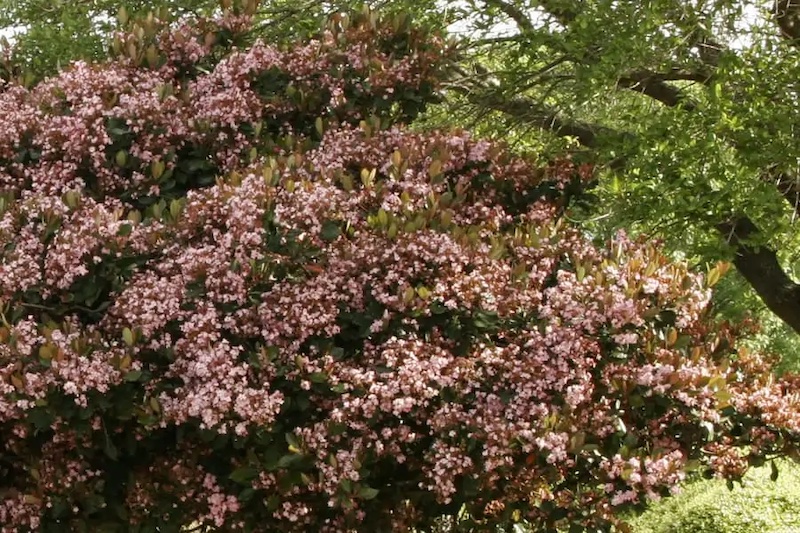Indian Hawthorn is a great spring flowering shrub with evergreen leaves and a compact growth habit. Rhaphiolepis indica is commonly used in mass plantings of low-growing hedges, foundation plantings, or in containers for the deck or patio. The shrub will tolerate a wide range of soil conditions as long as the drainage is excellent. The only drawback to planting Indian Hawthorn is that the fresh new growth and flowers in the spring are highly attractive to deer. Even though most broadleaved evergreens are generally safe to grow in areas of high deer activity, Indian Hawthorn will need to be protected year-round from browsing deer.

Keeping Deer Away From Indian Hawthorn
There are many repellent sprays and granules marketed to keep deer from eating your garden plants. Some of these sprays are meant to repel the deer from a plant entirely, and others change the taste of the plant. Sprays with main ingredients such as cayenne pepper (often labeled capsaicin), egg, sulfur, or menthol are sprayed directly on the plant, creating a coating that will keep deer from eating more than a bite here and there.
Fencing to keep deer out of your yard is also an option, although the fencing must be at least 8 ft high to keep deer from jumping over it. Protective cages made with hardware cloth mesh and contractor stakes work great to protect individual specimen trees or shrubs until they are mature enough to withstand deer browsing. However, this is not a viable option for protecting a large hedge or foundation planting of Indian Hawthorn. Deer are creatures of habit and use the same paths in and out of your garden. Planting your Indian Hawthorn well away from these paths will improve its chances of survival.
Will Indian Hawthorn Come Back After Deer Eat Them?
Deer find Indian Hawthorn so tasty that they not only eat the leaves and flowers but will take stems and branches to the ground. Young plants may not survive a session of browsing, while a more mature shrub will stand a better chance of regrowth. Always tidy up a damaged shrub by making clean cuts just below the ragged deer bite marks. Damaged stems and bark are more susceptible to further damage by pests and diseases.
Sources: Rutgers New Jersey Agricultural Experiment Station ‘Landscape Plants Rated by Deer Resistance’ 2018
 |
Author Robbin Small - Published 6-08-2023 |
